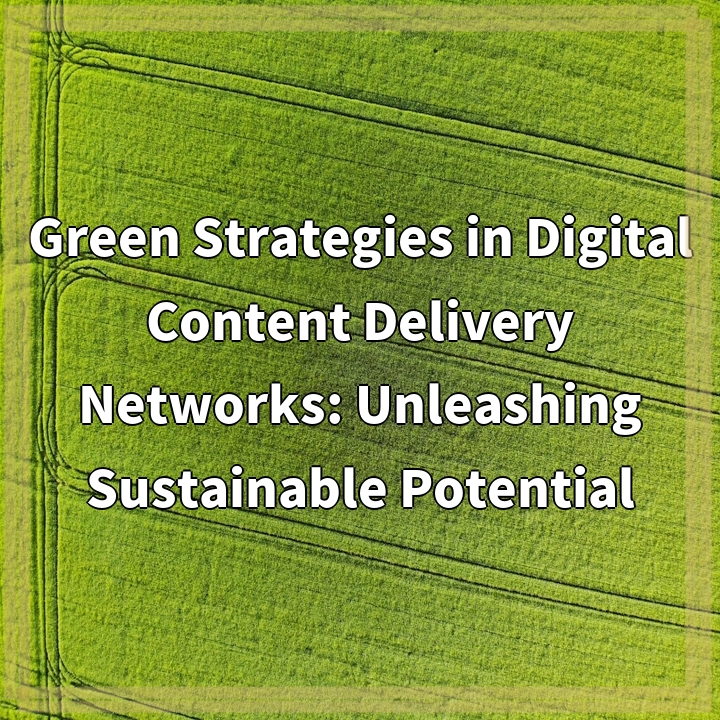Physical Address
304 North Cardinal St.
Dorchester Center, MA 02124
Physical Address
304 North Cardinal St.
Dorchester Center, MA 02124

In recent years, the rapid expansion of digital content delivery networks (CDNs) has sparked concerns about their environmental impact. CDNs are responsible for delivering online content, such as websites, videos, and images, to users all around the world. While these networks have revolutionized the way we access and consume digital content, they also consume a significant amount of energy and contribute to carbon emissions.
CDNs require a vast infrastructure of data centers and servers to deliver content efficiently. These data centers consume substantial amounts of electricity to power and cool the equipment, resulting in a significant carbon footprint. This high energy consumption not only contributes to greenhouse gas emissions but also strains energy resources and increases operational costs.
The energy-intensive operations of CDNs, especially in regions where the electricity is generated from fossil fuels, contribute to the release of carbon dioxide and other greenhouse gases into the atmosphere. This exacerbates climate change and further degrades the environment. Finding ways to reduce carbon emissions in CDNs is crucial for achieving sustainability goals.
As the demand for digital content continues to rise, CDNs are constantly expanding their network infrastructure to accommodate increasing traffic and deliver content faster. This expansion often entails building new data centers and deploying additional servers, which leads to deforestation, land degradation, and increased energy consumption for construction and maintenance.
The technology used in CDNs rapidly becomes obsolete, and equipment is regularly upgraded to keep up with the evolving digital landscape. This creates a significant challenge in managing electronic waste (e-waste). Improper disposal of e-waste leads to environmental pollution and health hazards due to the release of toxic substances into soil and water sources.
Implementing energy efficiency measures in CDNs can significantly reduce energy consumption. This includes optimizing server configurations, improving cooling systems, using energy-efficient hardware, and adopting renewable energy sources for powering data centers. By reducing energy consumption, CDNs can minimize their carbon footprint and lower operational costs.
Green data centers are designed with energy-efficient technologies, such as advanced cooling systems and energy management software. By migrating CDNs to green data centers, companies can reduce their impact on the environment while still maintaining high-performance delivery of digital content. Furthermore, locating data centers in regions with a high share of renewable energy can help mitigate carbon emissions.
Optimizing content delivery processes can improve efficiency and reduce energy consumption. This can be achieved through techniques such as intelligent caching, code optimization, and traffic management algorithms. By minimizing the distance data needs to travel and reducing redundant content requests, CDNs can decrease energy usage and carbon emissions.
Adopting a circular economy approach involves promoting the reuse, recycling, and responsible disposal of CDNs’ electronic equipment. This can include refurbishing and repurposing old servers, implementing e-waste recycling programs, and partnering with certified e-waste management companies. By minimizing e-waste and properly managing the end-of-life of equipment, CDNs can mitigate environmental pollution and landfill contribution.
By implementing these green strategies in digital content delivery networks, the industry can unleash its sustainable potential and contribute to a greener and more environmentally friendly future.
If you’re wondering where the article came from!
#